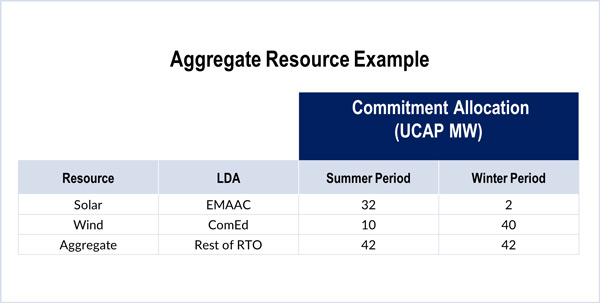By Rory D. Sweeney
FERC has given an unconditional thumbs-up to resource-aggregation rules for PJM that staff conditionally approved last year when the commission lacked a quorum (ER17-367).
The order officially approves rule changes PJM filed in November 2016 to allow seasonal resources to aggregate across locational delivery area borders, along with methodology changes to better account for demand response and wind performance in the winter. The new rules were implemented in time for last year’s Base Residual Auction, the first requiring all resources meet tougher Capacity Performance standards. (See PJM Outlines Aggregation Rules for Upcoming Capacity Auction.)
The commissioners affirmed staff’s decision without any changes, dismissing multiple protests. Throughout the order, the commission acknowledged that other strategies could work but that there were no compelling arguments for why PJM’s plan failed the “just and reasonable” standard.
The RTO argued to relax the rules prohibiting seasonal resources from aggregating across LDAs because they inhibit “what otherwise would be considered logical pairings” of resources that perform much better in one season compared to others, such as solar in the summer and wind in the winter. The rules model the aggregated resource in the lowest common tier of the LDA hierarchy, which could be RTO-wide; the resource would receive the corresponding LMP as compensation.
Opponents argued that the changes would interfere with accounting for a variety of factors, including reliability, resource adequacy and compensation. FERC denied all the protests, agreeing with PJM that the resources will remain responsible for actions in their individual LDAs, such as paying penalties during penalty-assessment intervals. The order approves PJM’s creation of a new mechanism called “RPM aggregation,” along with defining summer- and winter-only resources that submit offers for only half of the year.
Winter CIRs
FERC also approved PJM’s plan for modifying how it calculates winter-period capacity interconnection rights (CIRs) and dismissed multiple protests, allowing wind resources to put substantially more onto the grid. The commission agreed that the previous methodology, which relied on resources’ performance in the summer, grossly understated wind’s potential in the winter production, typically granting them the rights to inject just 13% of their nameplate capacity regardless of actual production.
Opponents argued that the changes will give resources rights to use more infrastructure than they paid for, but the commission agreed with PJM’s guarantee to prevent infringement on other resources’ available system capabilities as well as overwhelming the system’s existing topology.
PJM also sought to eliminate rules that limited how DR resources measured performance in the winter. The approved changes allow curtailment service providers to specify either a seasonal load cap resources are willing to commit if called upon or a firm amount of demand the resources are willing to drop in each season if dispatched by PJM.
“Specifically, PJM states that stakeholders are concerned that customers with winter load that reduce their load prior to PJM dispatch may not be recognized by PJM as having performed consistent with the Capacity Performance rules,” the order explains. “PJM … will ensure that customers with winter load consume electricity at a lower level when dispatched by PJM for an emergency or pre-emergency load management event, and that customers without winter load will not receive credit under the Capacity Performance rules for a load reduction just because they do not have load in the winter.”


